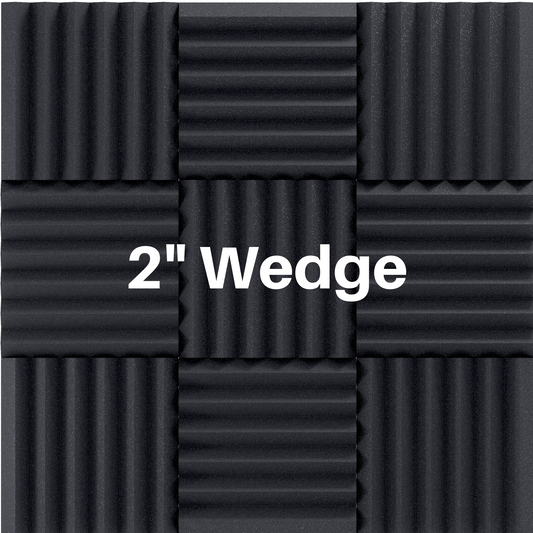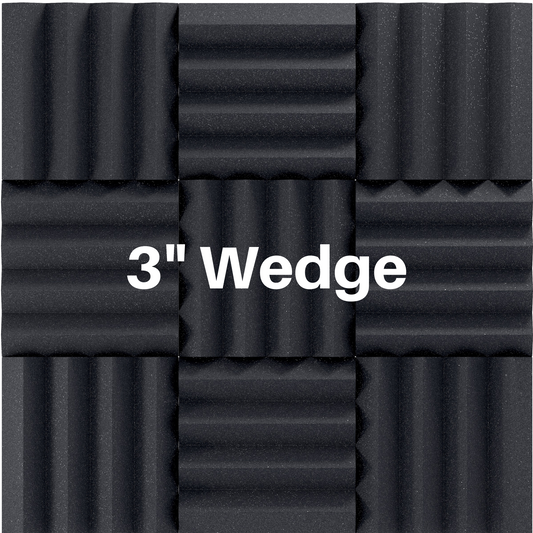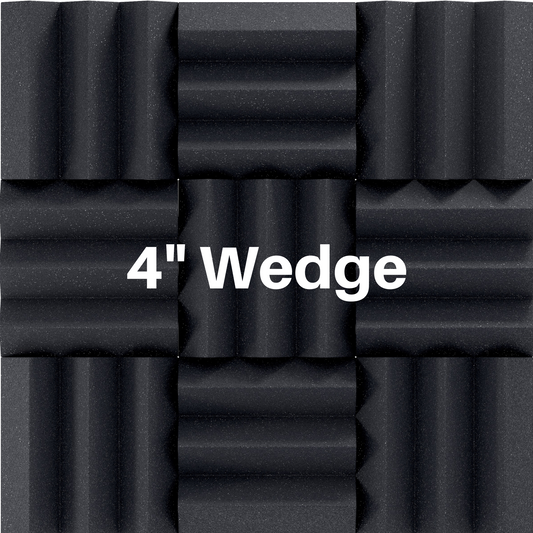How Does Sound Amplification Work?
Share
Do you ever wonder how sound is produced from instruments like a guitar or organ? Or how sound is produced by your car speakers? Most of the amazing sounds we hear every day are made possible by sound amplification.
Sound amplification refers to the process of increasing the amplitude (or loudness) of an audio signal. This can be done through the use of electronics such as amplifiers, speakers, or sound systems. It can also be done without electricity through acoustical means such as using a hollow body or tuned pipe to amplify sounds. The goal of sound amplification is to make the sound louder and more easily heard by the intended audience.

Here is the roadmap for the rest of this article.
- How Is Sound Produced?
- Sound Amplification Without Electricity
- Sound Amplification With Electricity
How Is Sound Produced?
Sound is all about vibrations! Positive vibrations!
Sound is created by vibrations that travel through a medium such as air or water, and then detected by the ear. These vibrations create pressure waves that move through the air or water.
The source of the vibrations can be anything that is capable of vibrating, such as a musical instrument, a human voice, or a machine. The vibrations cause the surrounding air molecules to compress and contract, creating a pressure wave that moves through the air.
When the wave reaches your ear, it causes the eardrum to vibrate, which then triggers nerve impulses that travel to the brain where they are interpreted as sound.
Below is a picture showing what a sound wave looks like on a graph. For amplification we are looking at the amplitude of the wave. The displacement is less prior to amplification and more after amplification occurs.

Now that we understand that sound is created by vibrations, let’s see how vibrations are amplified to make sound louder. Have you ever played an electric guitar without being plugged in? You can still hear the notes but the sound has much less intensity than a guitar being amplified with an amp or a hollow body with an acoustic guitar.
Sound Amplification Without Electricity
Non electronic or “acoustic” instruments amplify sounds by using the principle of resonance. Acoustic instruments usually have more than one element that vibrates to create sound. For example, a string instrument like a piano has a soundboard that is connected to strings. We will go over some more examples down below!
The vibrations of the strings create little sound by themselves. However the small sound that the strings create is amplified by the sound board and the body of the instrument to make it so we can hear the sound being produced by the strings.
Acoustic Guitar Example
The body of an acoustic guitar is designed to amplify the sound of the strings by resonating with them. The sound waves produced by the vibrating strings cause the top, or soundboard, of the guitar to vibrate as well. The soundboard is usually made of wood, which is a great material for amplifying sound because it is light and stiff. As the soundboard vibrates, it causes the surrounding air to vibrate, creating a louder sound.
The body of the guitar also amplifies the sound by reflecting it back towards the listener. The sound waves that are emitted by the strings and the soundboard are reflected by the sides and back of the guitar, which increases the overall sound level. Additionally, the guitar's sound hole allows sound to radiate outwards and sound energy to be heard more easily.
Overall, the combination of the vibration of the strings, the resonance of the soundboard and the reflection of the sound by the body of the guitar, and the sound hole allows the sound of the strings to be amplified and heard more loudly.

Marimba Example
Another example of amplifying sound is a pitched percussion instrument. A marimba is in this class of instruments.

When playing a marimba, each wooden bar reverberates with its own unique sound that is amplified by the vibrations of a pipe similar to an organ pipe. Every strike produces a tone of the bar's “resonant frequency”. The resonant frequency depends on the size of each bar. The resonant frequency is then amplified throughout a room by the pipes. Often the pipes used in these resonator instruments are tuned to the same frequency as the bar.
Drum Example
The drum shell amplifies the sound by resonating with the drumhead. The sound waves produced by the vibrating drumhead cause the drum shell to vibrate. As the drum shell vibrates, it causes the surrounding air to vibrate, creating a louder sound.
The size and shape of the drum shell also affect the sound produced. A larger drum will produce a lower frequency sound, while a smaller drum will produce a higher frequency sound. The kick drum has the lowest frequency and is the largest and hardest to haul around 🙂
The shape of the drum also affects the sound, with a cylindrical drum producing a different sound than a conical drum. An example of a conical drum is the timbal.
Also, an open-backed drum will allow sound to escape through the back, which can give the drum a different tone than a closed-backed drum.
Overall, the combination of the vibration of the drumhead, the resonance of the drum shell, the size, shape and the open or closed back design of the drum, allows the sound of the drum to be amplified and heard more loudly.
So we know that non-electrical instruments amplify sound through resonance! Now, let’s talk about electronic amplification of sound!
Sound Amplification With Electricity
Electronic sound amplification is the process of increasing the amplitude of an audio signal using electronic devices. This can be achieved through the use of amplifiers, speakers, or sound systems.
Amplifiers are the main electronic component used for sound amplification. Amplifiers take an input audio signal and increase its amplitude (loudness) before sending it to speakers. Different types of amplifiers include analog and digital.
Analog amplifiers are the traditional type of amplifier that uses analog electronic components. These include transistors or vacuum tubes to amplify the signal. They have been used for decades in various audio applications, from guitar amplifiers to home audio systems.
Digital amplifiers are a newer type of amplifier that use digital electronic components, such as microprocessors or digital signal processors to amplify the signal. Digital amplifiers became super popular because of their reliability, low distortion, and flexibility. However, many purists and hifi audio folks swear that analog gear is the way to go!
Speakers are another important component of electronic sound amplification. Speakers convert the amplified electrical signal back into sound waves. The size, design, and materials used in the speaker affect the sound you hear. A larger speaker will produce a louder sound, while a smaller speaker will produce a softer sound. Different materials and designs are used to produce different tones.
Overall, electronic sound amplification uses electronic devices such as amplifiers and speakers to increase the amplitude of an audio signal and make the sound louder and more easily heard by the intended audience.
Speaker Example
A speaker produces sound by converting the amplified electrical audio signal into mechanical energy, which then becomes sound waves that travel through the air.
The speaker consists of a magnet, a voice coil, and a diaphragm or cone. The electrical audio signal is sent to the voice coil first. The voice coil is a coil of wire that is wrapped around a cylinder that is located in front of a magnet. When an electrical current flows through the voice coil it creates a magnetic field that interacts with the magnet. This interaction causes the voice coil to move in and out, creating a back and forth motion (a vibration!).
The back and forth motion of the voice coil causes the diaphragm or cone, which is connected to the voice coil, to move as well. The diaphragm is typically made of paper, plastic, or metal and its movement forces the air around it to move which creates sound waves.
The size, shape, materials, and design of the speaker, as well as the characteristics of the audio signal, will affect the sound produced. Different types of speakers are designed for different frequency ranges and can produce different sounds depending on the design.
Electric Guitar Example
Now let’s look at how sound is amplified using an electric guitar. An electric guitar amplifies sound by using an electronic device called an amplifier. This works similarly to the speakers we talked about above. But how does the sound get from the strings to the amp?
A guitar has pickups, which are electromagnetic devices that convert the vibrations of the strings into an electrical signal. The electrical signal is then sent to the amplifier where it is amplified and sent to a speaker.
There are several types of pickups that can be used in an electric guitar such as single-coil pickups and humbucking pickups. Single-coil pickups are more susceptible to electromagnetic interference and produce a brighter, more twangy sound. Humbucking pickups have two coils that are wired in opposite polarity, which cancels out electromagnetic interference and produces a warmer, more balanced sound.
The amplifier has several components that work together to increase the amplitude of the electrical signal, including an input stage, a preamp stage, and a power stage. The input stage receives the electrical signal from the guitar's pickups and amplifies it slightly. The preamp stage further amplifies the signal and allows the user to adjust the tone by using controls such as the bass, mid, and treble. The power stage is responsible for the final amplification of the signal and sends it to the speaker.
Vinyl Record Example
Vinyl records are becoming popular again, and some people swear they produce the best sound. So let’s look into how sound is produced from a vinyl record!
Sound is amplified from a vinyl record by using a turntable and a phono preamp. A turntable is a device that spins a vinyl record at a constant speed. A phono preamp is an electronic device that amplifies the weak signal from the turntable before it is sent to an amplifier.
The sound on a vinyl record is encoded as a series of grooves that run along the surface of the record. A stylus (AKA the needle) is mounted on the end of a tonearm. The stylus is placed in the groove of the record and follows the groove as the record spins. The grooves cause the stylus to vibrate which produces an electrical signal that is a representation of the original sound.
Below is a close up picture of a groove from a vinyl record.

The electrical signal generated by the stylus is very weak and needs to be amplified before it can be sent to a speaker. This is done by the phono preamp. The amplified signal is then sent to an amplifier, which further amplifies the signal and sends it to speakers.
As you can see, vinyl records are a truly GROOVY experience!
So there you have it, sound amplification is all about vibration and resonance! Have you seen any cool or unique ways that sound was amplified? Share in the comment section!







